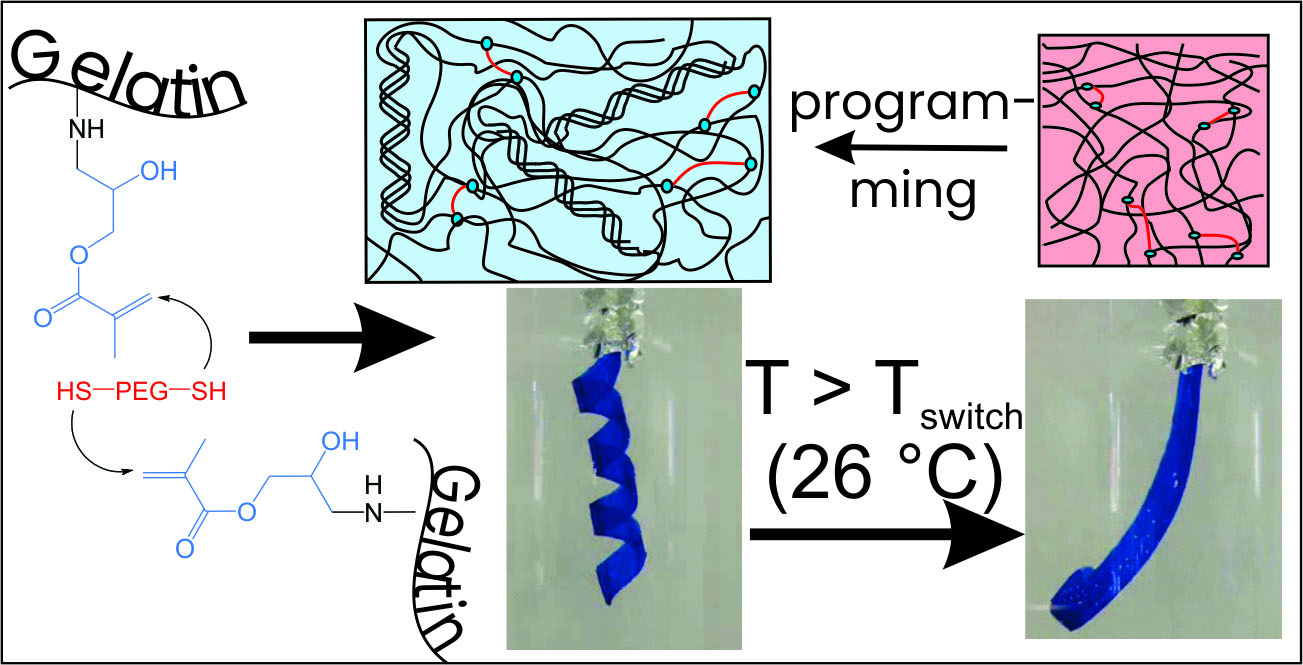Shape-memory hydrogels (SMH) are as multifunctional, actively-moving polymers of interest in biomedicine. In loosely crosslinked polymer networks gelatin chains may form triple helices, which can act as temporary netpoints in SMH, depending on the presence of salts. Here, we show programming and initiation of the shape-memory effect of such networks based on a thermomechanical process compatible with the physiological environment. The SMH were synthesized by reaction of glycidylmethacrylated gelatin with OEG α,ω-dithiols of varying crosslinker length and amount. Triple helicalization of gelatin chains is shown directly by wide-angle X-ray scattering and indirectly via the mechanical behavior at different temperatures. The ability to form triple helices increased with the molar mass of the crosslinker. Hydrogels had storage moduli of 0.27-23 kPa and Young’s moduli of 215-360 kPa at 4 °C. The hydrogels were hydrolytically degradable, with full degradation to water soluble products within one week at 37 °C and pH = 7.4. A thermally-induced shape-memory effect is demonstrated in bending as well as in compression tests, in which shape recovery with excellent shape recovery rates Rr close to 100% were observed. In the future, the material presented here could be applied e.g. as self-anchoring devices mechanically resembling the extracellular matrix.

